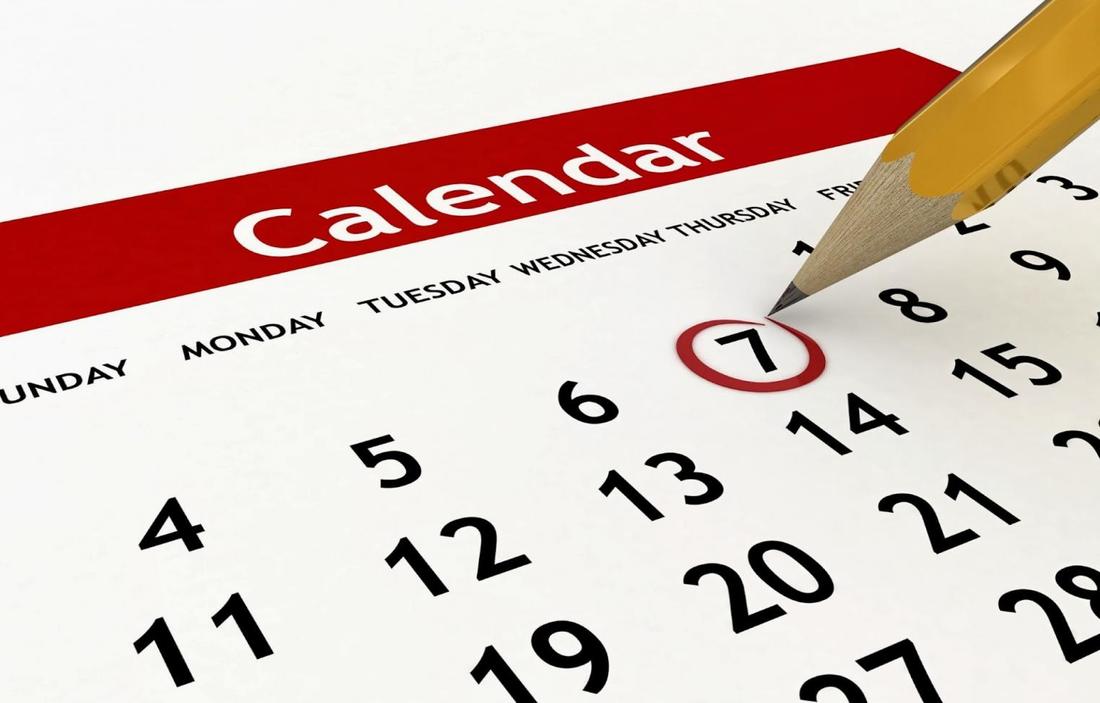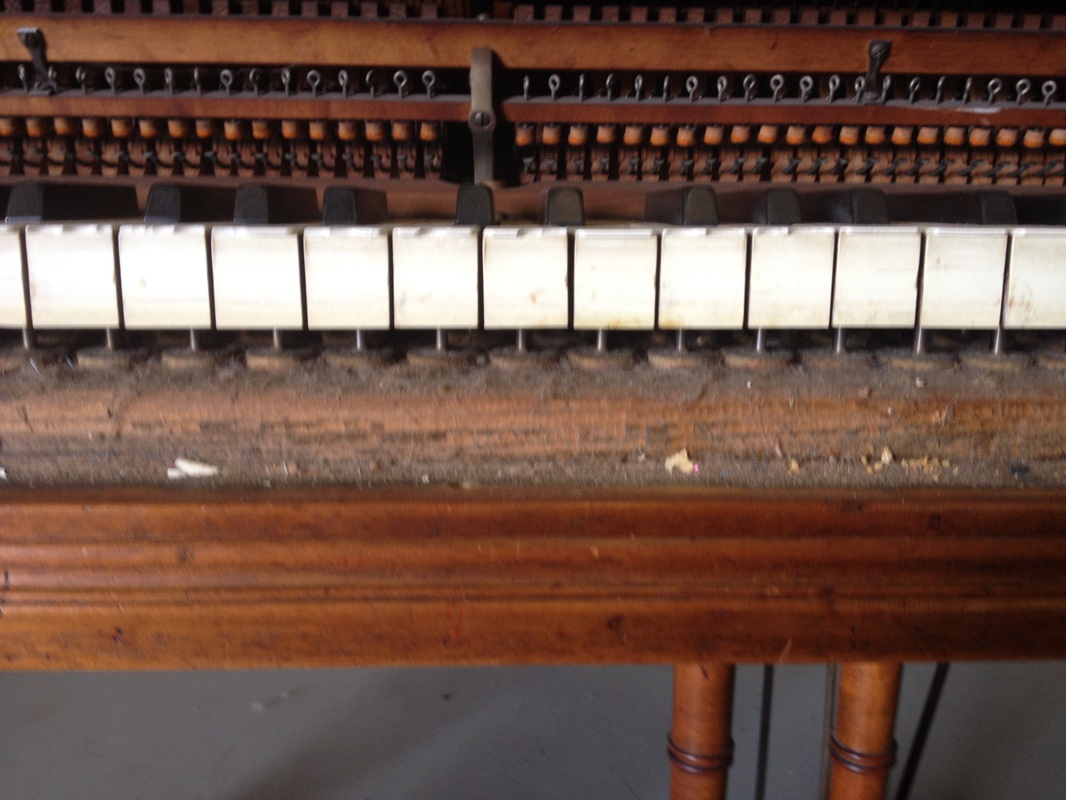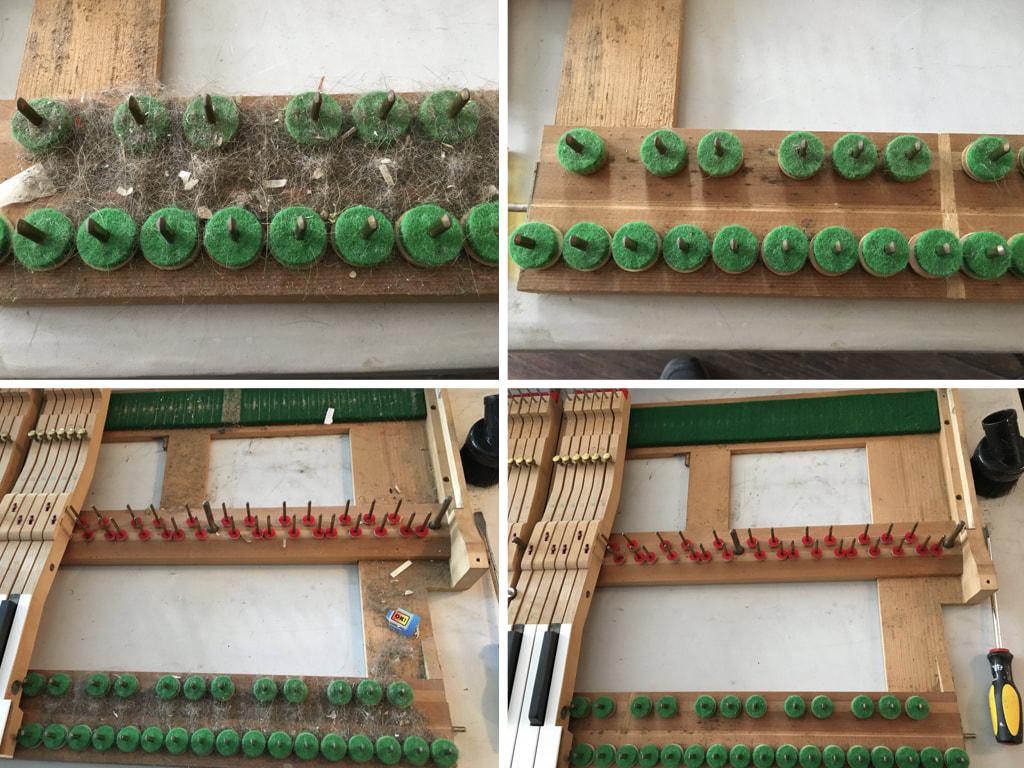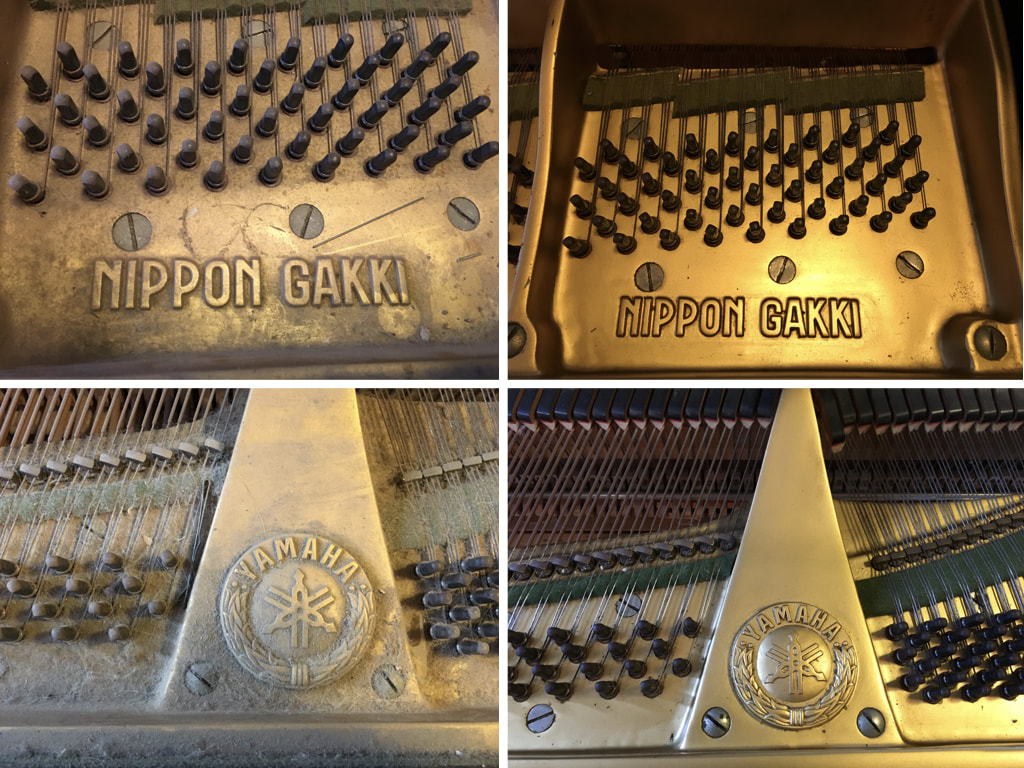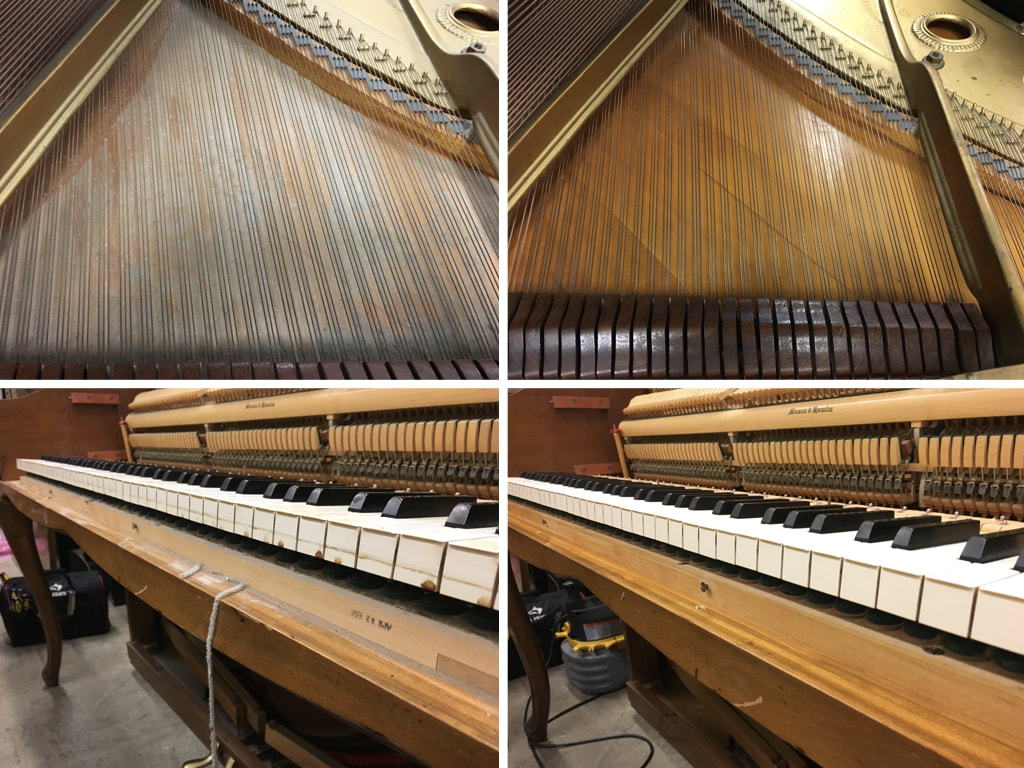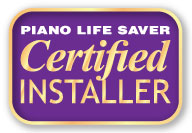TUNING - CLEANING - PNOmation - Humidity Control - Voicing & Regulation
HOW OFTEN SHOULD I TUNE MY PIANO?
Well, how often does a guitar or a violin need tuned? Every time it is picked up and played. Sometimes even in the middle of a performance. Well, in reality a piano is no different. The time, effort, and cost involved simply make it impractical unless you are a professional performer. Fortunately, pianos can be relatively stable and tend to change pitch more or less uniformly, the whole instrument moving sharp or flat. There is a well known quote from a textbook in the trade, “'The piano is a remarkable instrument, it will stay in tune for up to 3 weeks”.
People tend to get their piano tuned either on a regular basis (monthly to yearly), when they start hearing individual out of tune notes that bother them, or when someone tells them their piano is out of tune. The gist of my note here is that it is never too soon to get your piano tuned. Unless it was tuned just last week, it needs it. It just a matter of degree, how badly it needs it. For each owner and instrument, that can vary widely.
Tuners strive for two things when tuning a piano, accuracy and stability. Tuners try to get the instrument to stay in tune for as long as possible, but that is limited by the instrument and the environment. All of the wood and felt in the instrument swells with increasing humidity and shrinks when the environment dries out. This means the size of the bridge, the crown of the sound board, the shape of the frame are continuously changing, putting more or less pressure on the strings, changing the pitch. Much like a guitar or violin. In some cases, environmental control system, such as the Piano Life Saver System by Dampp-Chaser can be used to keep the humidity and temperature more constant inside the piano. This can help stabilize pitch.
A secondary reason for regular tuning is that the technician gets to spend time inside the piano, making observations and getting to know the instrument better and better with each visit. Such intimacy with the instrument allows the technician to see problems that are on the horizon and enabling a repair that is generally more simple and less expensive than letting small issues become major problems.
A piano that is left untuned, even if not played, will tend to dry rot, like an old car left in a barn. Regular tuning for an unplayed piano is often the only exercise it gets, and like humans, pianos need exercise. Instruments want to be played, they need to be played.
So, how often should you tune you piano? At least once a year, even if you do not play it. I recommend seasonally, with the changing environment in your home, a couple of weeks after you turn on the furnace and six months later. If you are a performer, more regular tunings will make your musical experience more pleasurable and the deeper the relationship you have with your tech, the more they can help make your piano work, play, feel, and sound better.
Pet owners have to keep a pet budget, for food, tags, shots, toys, litter, treats, kenneling, etc. Piano owners can budget to care for the pianos in much the same way, saving money for regular tunings, and long term maintenance such as voicing or regulation (keeping the piano sounding and working at its best). One can make a soft analogy between the responsibilities of a pet owner and the responsibilities of a piano owner. Your tech is your vet.
In closing: It is never too soon to tune your piano. Regular tunings have many advantages for you and your instrument. Neglected instruments can become very costly to repair. Keep a piano care budget.
People tend to get their piano tuned either on a regular basis (monthly to yearly), when they start hearing individual out of tune notes that bother them, or when someone tells them their piano is out of tune. The gist of my note here is that it is never too soon to get your piano tuned. Unless it was tuned just last week, it needs it. It just a matter of degree, how badly it needs it. For each owner and instrument, that can vary widely.
Tuners strive for two things when tuning a piano, accuracy and stability. Tuners try to get the instrument to stay in tune for as long as possible, but that is limited by the instrument and the environment. All of the wood and felt in the instrument swells with increasing humidity and shrinks when the environment dries out. This means the size of the bridge, the crown of the sound board, the shape of the frame are continuously changing, putting more or less pressure on the strings, changing the pitch. Much like a guitar or violin. In some cases, environmental control system, such as the Piano Life Saver System by Dampp-Chaser can be used to keep the humidity and temperature more constant inside the piano. This can help stabilize pitch.
A secondary reason for regular tuning is that the technician gets to spend time inside the piano, making observations and getting to know the instrument better and better with each visit. Such intimacy with the instrument allows the technician to see problems that are on the horizon and enabling a repair that is generally more simple and less expensive than letting small issues become major problems.
A piano that is left untuned, even if not played, will tend to dry rot, like an old car left in a barn. Regular tuning for an unplayed piano is often the only exercise it gets, and like humans, pianos need exercise. Instruments want to be played, they need to be played.
So, how often should you tune you piano? At least once a year, even if you do not play it. I recommend seasonally, with the changing environment in your home, a couple of weeks after you turn on the furnace and six months later. If you are a performer, more regular tunings will make your musical experience more pleasurable and the deeper the relationship you have with your tech, the more they can help make your piano work, play, feel, and sound better.
Pet owners have to keep a pet budget, for food, tags, shots, toys, litter, treats, kenneling, etc. Piano owners can budget to care for the pianos in much the same way, saving money for regular tunings, and long term maintenance such as voicing or regulation (keeping the piano sounding and working at its best). One can make a soft analogy between the responsibilities of a pet owner and the responsibilities of a piano owner. Your tech is your vet.
In closing: It is never too soon to tune your piano. Regular tunings have many advantages for you and your instrument. Neglected instruments can become very costly to repair. Keep a piano care budget.
QRS PNOmation3
Sales, Installation, Service, Upgrades, 12,000 song library
Many older systems can be upgraded with a new processor, even if it is not a QRS system.
Play from any device, any OS, even an Apple Watch.
Connect two pianos remotely, a piano in one city can control a piano in another city.
Check the company website at qrsmusic.com.
Sales, Installation, Service, Upgrades, 12,000 song library
Many older systems can be upgraded with a new processor, even if it is not a QRS system.
Play from any device, any OS, even an Apple Watch.
Connect two pianos remotely, a piano in one city can control a piano in another city.
Check the company website at qrsmusic.com.
CLEANINGAction
Remove action. Tighten all screws. Lubricate center pins, key bed & frame. Vacuum action and interior. Keys Remove keys. Individually polish. Polish and lubricate key pins and bushings. Vacuum key bed. Soundboard & Plate Cleaning (Grand Piano) Clean the piano's sound board & plate of dust and grime. High Gloss Polyester Case Polish High gloss polyester case polish. Hide swirls and surface scratches. Repels dust. Standard or Duralast. |
When was the last time you had the inside of your piano cleaned?
One look at the Before-&-After photos below and you might shudder imagining what could be in yours. Did your piano once belong to a smoker? Let me refresh your piano any time of year. Safe, non toxic cleaners. Feel better knowing that your piano is clean on the inside.
One look at the Before-&-After photos below and you might shudder imagining what could be in yours. Did your piano once belong to a smoker? Let me refresh your piano any time of year. Safe, non toxic cleaners. Feel better knowing that your piano is clean on the inside.
|
|
|
|
|
Regulation, Voicing, and Repair
Adjust, align, and replace action parts to optimize performance. Work hammers & strings to adjust tone. Symptoms include stiff, sluggish, sloppy, or wiggly keys, ringing or repeating notes, uneven feel or sound. Work can vary from light regulation to a complete reworking of the action. Estimates vary based on the needs of the client. |
VOICING
Every piano has a unique sound quality, a voice. Much of the difference is due to design, but even pianos of the same make and model will sound different. The procedure of modifying a piano’s tone quality is called “voicing”.
Sometimes a piano will sound very metallic, with clanging tone quality. Sometimes the sound is muffled and dull. Often there will be certain notes that exhibit these qualities more than their neighbors. Voicing evens out the tone and can make the sound brighter or darker to a certain degree. Bright, metallic tone is often caused by hard hammers. You can look at the hammers on your piano. Where the hammer strikes the strings you will see grooves. These grooves are where the felt has compressed and has become more dense. If these grooves are not too deep, the hammers can be reshaped by sanding, Subtle changes of voicing and getting notes to match is achieved by “needling” the hammers. This entails delicately changing the felt fibers using a sharp needle.
The overall tone quality of a piano can sometimes be made brighter by chemically hardening the hammers.
Thuddy sounding notes in the bass are most often caused by dead strings. Sometimes giving the strings a twist can sometimes improve the tone.
The short story is that you can change the tone quality of your piano (within reason). People who like the way their piano sounds tend to play more often. I can only assume that they are finding their experience more enjoyable.
Please ask me about how voicing or regulation might help you love your piano more. Call or send a message. For a more detailed assessment, let’s schedule a tuning and we can look at your piano in detail. Voicing and Regulation are included in our Full Service appointments.
Sometimes a piano will sound very metallic, with clanging tone quality. Sometimes the sound is muffled and dull. Often there will be certain notes that exhibit these qualities more than their neighbors. Voicing evens out the tone and can make the sound brighter or darker to a certain degree. Bright, metallic tone is often caused by hard hammers. You can look at the hammers on your piano. Where the hammer strikes the strings you will see grooves. These grooves are where the felt has compressed and has become more dense. If these grooves are not too deep, the hammers can be reshaped by sanding, Subtle changes of voicing and getting notes to match is achieved by “needling” the hammers. This entails delicately changing the felt fibers using a sharp needle.
The overall tone quality of a piano can sometimes be made brighter by chemically hardening the hammers.
Thuddy sounding notes in the bass are most often caused by dead strings. Sometimes giving the strings a twist can sometimes improve the tone.
The short story is that you can change the tone quality of your piano (within reason). People who like the way their piano sounds tend to play more often. I can only assume that they are finding their experience more enjoyable.
Please ask me about how voicing or regulation might help you love your piano more. Call or send a message. For a more detailed assessment, let’s schedule a tuning and we can look at your piano in detail. Voicing and Regulation are included in our Full Service appointments.
REGULATION
Have you played some pianos that were easy to play that your fingers seemed to be just floating - and others that felt like you were trudging through three feet of thick mud? Your piano is probably somewhere in between. A good “regulation” can greatly improve the feel of your piano and make it far more easy to play. Of course, an upright will never feel and play the same as a nice grand because the mechanics of the actions are too different. But a well regulated upright can still be real pleasure to play.
Proper piano maintenance requires more that regular tunings. It is a complicated mechanical instrument of over 5,000 parts. There are no less than 6 adjustments that can be made (to every note) in addition to tuning it. These adjustments are known as “Regulation”. Adding to the complexity, each adjustment pretty much affects all of the others. Yamaha teaches a 37-step regulation procedure. In this article I will break down the basic needs of a typical upright piano and how they affect the enjoyment of playing your instrument.
Before regulating, it is important to remove the action and tighten all of the action screws. These screws work themselves loose over the years, making the parts unstable resulting in making any adjustments only temporary. (This takes about 1 hour).
1. Hammer Blow Distance.
This is the distance between that hammer at rest and the strings. This is the starting point and sets the requirement for many of the other adjustments and is usually worked on first. It can usually be adjusted in less than 30 minutes.
2. Key Height.
This is probably one of the most noticeable regulation needs. It is relatively easy to tell if the keys are pretty much level and even or if some sit lower or higher than others. Not only is this starting point of the key stroke important, the unevenness can be noticeable to the touch and make the piano unpleasant to play. It takes approximately 2 hours to set and level the keys.
3. Key Dip.
This is how far you can press the key down. This should be the same for all of the keys and can become uneven just like the key height. Poor key dip can make it feel like the keys are hard to press down, like the piano is fighting against you, making the instrument tiring to play. It also affects how the hammer moves toward the string. Poor key dip could cause “bobbling hammers”, hammers that stutter and repeat the note. It takes approximately 2 hours to set and level the key dip.
4. Lost Motion.
The keys are not directly connected to the action. Capstans push on wippens. Sometimes there is an excessive gap between the capstan and the wippen. One can press the key quite a distance before they make contact and the action is engaged. If this gap is excessive, you can oress the key slowly and you can feel the key engage the action part way through the key stroke. It takes approximately 1 hour to adjust all of the capstans.
5. Let Off.
In a piano, the action disengages from the hammer and “throws” the hammer at the sting for the last 1/16th of an inch. Poor let off can mute the note by pressing the hammer against the string and can drastically change the feel of the piano. Press the key slowly. You can feel the “jack” releasing and can see the hammer fall backward. It usually takes between an hour and 90 minutes to adjust all of the let off screws.
6. Back Checks.
Besides the hammers, the second most obvious part someone looks at the piano action. The back checks catch the hammers after they strike the string, preparing the note to be repeated. Poor back check alignment can affect the playing to repeated notes or could even mute notes by pressing the hammer against the strings. It usually takes about an hour to adjust all of the back checks and bridal straps.
Beyond these Basic 6:
The hammers must be aligned to hit all of the strings, as do the dampers, which mute the strings when you lift the key. The dampers should be regulated so that they all lift about half way through the key strong, and so they all lift at the same time when you press on the damper pedal. Dampers are hard to access and take a bit more time to work on. (Approximately 3 hours.)
Keys that wobble a lot, either side to side or front to back on their pins, need to have their mortices re-bushed with new felt. (Approximately 6 hours.)
Experience has shown us that the easier an instrument is to play, the more pleasure people derive from playing it, and vice versa. At David’s Fine Tuning, we don’t just want to tune your piano. We want you to be able to get the most enjoyment you can out of it. Please contact us and ask us about the benefits of a well regulated piano.
By taking advantage of our Full Service appointments, regular minor adjustments become “preventative maintenance”, reducing the need for a complete regulation
Proper piano maintenance requires more that regular tunings. It is a complicated mechanical instrument of over 5,000 parts. There are no less than 6 adjustments that can be made (to every note) in addition to tuning it. These adjustments are known as “Regulation”. Adding to the complexity, each adjustment pretty much affects all of the others. Yamaha teaches a 37-step regulation procedure. In this article I will break down the basic needs of a typical upright piano and how they affect the enjoyment of playing your instrument.
Before regulating, it is important to remove the action and tighten all of the action screws. These screws work themselves loose over the years, making the parts unstable resulting in making any adjustments only temporary. (This takes about 1 hour).
1. Hammer Blow Distance.
This is the distance between that hammer at rest and the strings. This is the starting point and sets the requirement for many of the other adjustments and is usually worked on first. It can usually be adjusted in less than 30 minutes.
2. Key Height.
This is probably one of the most noticeable regulation needs. It is relatively easy to tell if the keys are pretty much level and even or if some sit lower or higher than others. Not only is this starting point of the key stroke important, the unevenness can be noticeable to the touch and make the piano unpleasant to play. It takes approximately 2 hours to set and level the keys.
3. Key Dip.
This is how far you can press the key down. This should be the same for all of the keys and can become uneven just like the key height. Poor key dip can make it feel like the keys are hard to press down, like the piano is fighting against you, making the instrument tiring to play. It also affects how the hammer moves toward the string. Poor key dip could cause “bobbling hammers”, hammers that stutter and repeat the note. It takes approximately 2 hours to set and level the key dip.
4. Lost Motion.
The keys are not directly connected to the action. Capstans push on wippens. Sometimes there is an excessive gap between the capstan and the wippen. One can press the key quite a distance before they make contact and the action is engaged. If this gap is excessive, you can oress the key slowly and you can feel the key engage the action part way through the key stroke. It takes approximately 1 hour to adjust all of the capstans.
5. Let Off.
In a piano, the action disengages from the hammer and “throws” the hammer at the sting for the last 1/16th of an inch. Poor let off can mute the note by pressing the hammer against the string and can drastically change the feel of the piano. Press the key slowly. You can feel the “jack” releasing and can see the hammer fall backward. It usually takes between an hour and 90 minutes to adjust all of the let off screws.
6. Back Checks.
Besides the hammers, the second most obvious part someone looks at the piano action. The back checks catch the hammers after they strike the string, preparing the note to be repeated. Poor back check alignment can affect the playing to repeated notes or could even mute notes by pressing the hammer against the strings. It usually takes about an hour to adjust all of the back checks and bridal straps.
Beyond these Basic 6:
The hammers must be aligned to hit all of the strings, as do the dampers, which mute the strings when you lift the key. The dampers should be regulated so that they all lift about half way through the key strong, and so they all lift at the same time when you press on the damper pedal. Dampers are hard to access and take a bit more time to work on. (Approximately 3 hours.)
Keys that wobble a lot, either side to side or front to back on their pins, need to have their mortices re-bushed with new felt. (Approximately 6 hours.)
Experience has shown us that the easier an instrument is to play, the more pleasure people derive from playing it, and vice versa. At David’s Fine Tuning, we don’t just want to tune your piano. We want you to be able to get the most enjoyment you can out of it. Please contact us and ask us about the benefits of a well regulated piano.
By taking advantage of our Full Service appointments, regular minor adjustments become “preventative maintenance”, reducing the need for a complete regulation
